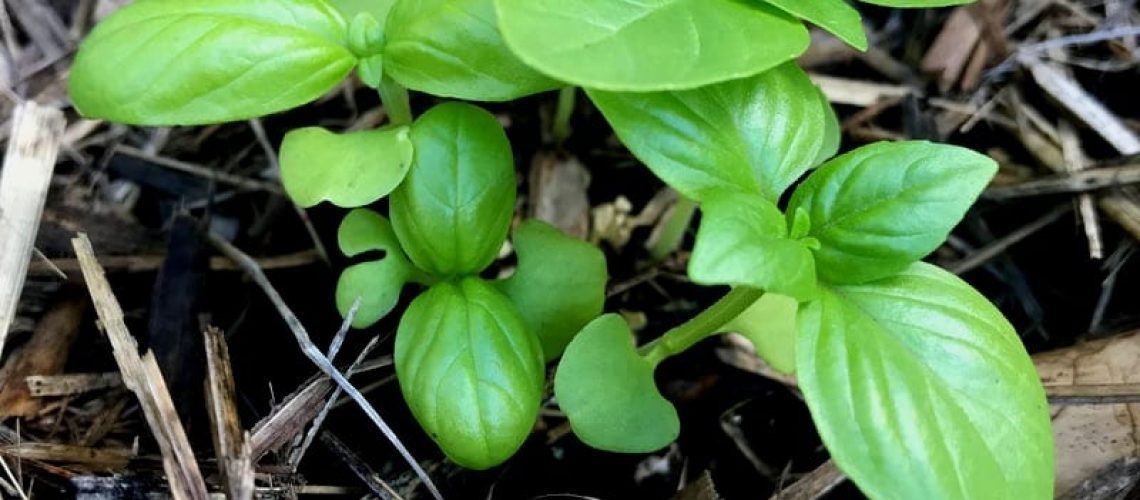Herbs are a great place to start when it comes to growing your own produce. They can be grown in pots or the ground, so no matter how much space you have a bounty of some sort is achievable. Nothing annoys me more than spending $5 on a bunch of herbs that go soggy and gross after couple of days and have to be tossed to the worms. When you’ve got home grown herbs at hand, they are always super fresh and you can take just the amount you need!
As a general rule, when planting in pots use a high quality organic potting mix and enrich your garden soil with compost or worm castings prior to planting, this means your soil will retain nutrients and moisture. Once your seedlings are established, mulch your herbs with sugar cane or pea straw.
Below you’ll find profiles on some of my favourites.
BASIL
Basil likes the warmer weather, so plant seeds or seedlings from September to February in a spot that gets full sun. Basil likes to be fed more than most other herbs, so although it’s an easy herb to grow some extra effort when it comes to fertilising can really pay off. Liquid feed with seaweed emulsion or worm wee every two weeks during the summer growing months. The more you harvest, the bushier your plant will get, but be sure to leave enough of the plant so it can continue to photosynthesise. When harvesting, cut just above the point where a set of leaves joins the stem. Pick off flowers when they appear to increase the lifespan of your plant. Plant it next to your tomato plants and it will act as a natural deterrent for pests.
CORIANDER
Plant Coriander seeds from September to April in a brightly lit but shaded/cool spot or during Autumn to early Winter in a nice sunny spot. The reason for this being, Coriander will bolt to seed in the searing heat and then the show will be over before it even started! Water Coriander twice weekly (daily during the hot months) and feed once a month with seaweed emulsion or worm wee. When harvesting, cut mature stems from the outer edge of the plant. You can also harvest the entire plant and use the roots, stems and leaves in cooking. Sow seeds every few weeks so you will have a continual supply.
MINT
Mint loves soil with constant moisture, not soggy, just damp. Plant Mint seedlings anytime but be sure to plant in a large pot as Mint will roam if planted in a garden bed. Mint likes sunshine, but not afternoon heat where it will lose its lushness, you will also find it starts to get leggy if it’s not getting enough sun. The benefit of growing it in pot is you can move it depending on the season/sun to find the perfect spot. Feed once a month with seaweed emulsion or worm wee. Harvest by cutting the stem just above the point where a set of leaves joins the stem.
ROSEMARY
Plant Rosemary seeds or seedlings (or cuttings of your own if you’re feeling adventurous) anytime of the year in full sun. Rosemary thrives in warm, dry conditions so make sure your soil is free draining. It’s a great one for beginners, as it will survive long periods without watering and you really only need to prune it once a year in early Spring to encourage a new flush of growth. During the rest of the year, general picking to add to meals will keep it in shape. Feed with an organic slow release fertiliser twice a year. Harvest sprigs by cutting the stem just above the point where a set of leaves joins the stem.
THYME
Plant Thyme seedlings anytime of year in a sunny position. Thyme also likes free draining soil and can suffer from root rot if it remains wet for too long. Test moisture in the soil before watering by sticking your pointer finger into the soil up to the second knuckle. If it’s still damp, leave watering till another day. Feed with an organic slow release fertiliser twice a year. Harvest by trimming with scissors, much like a hairdresser would, but be sure to leave enough foliage for the plant to continue to photosynthesise.
OREGANO
Find a sunny well drained position for Oregano seedlings and plant from April to September. Oregano is another one that doesn’t like soggy soil and generally does better with some tough love in the watering department. Feed once a month with seaweed emulsion or worm wee during the Spring/Summer growing season. Harvest in the same way as you would Thyme.
PARSLEY
Probably the most frequently used herb in my garden, as one family member has a penchant for Tabouli. Plant your Parsley seedlings any time of the year in full sun or semi-shade. Parsley is another one that benefits from some extra feeding, so be generous with the seaweed emulsion or worm wee applying it fortnightly during the growing months, this will ensure you have plenty of lush foliage. Harvest by cutting mature stems from the outer edge of the plant.
WORM WEE
Worm wee is the liquid produced from a worm farm. Worm farms are fantastic in a small space as there are many very compact varieties available, you can even make your own. The worms will gobble up a huge portion of your kitchen scraps which reduces the amount you put in your red bin every week and they produce fabulously nutrient dense worm wee for you to give back to your plants. Win, win! More to come on worm farms in the future.
* Planting times are based on a warm temperate climate such as Sydney, Australia.
If you are looking to redevelop your garden or require a new planting design or landscape design, don’t hesitate to contact The Urban Garden Co.


